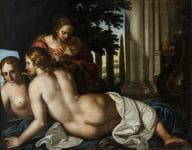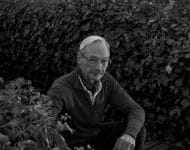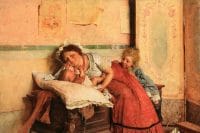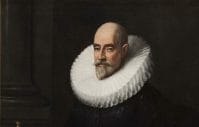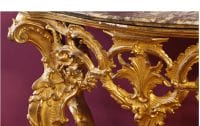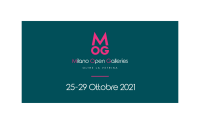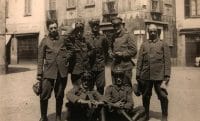The (almost unknown) world of Animalier Art and the young antiques dealer who staked everything on it
Before publishing this article, even we at Nowarc had only a vague idea of what Animalier Art meant. Or rather, like many other antiques enthusiasts (including some of the gallery owners themselves), we perhaps had too superficial a vision of this umpteenth facet of artistic productions. Then we met Valeria Ricci, owner of RV Art Gallery Studio, which showed us how fascinating and complex this world is, with a long history populated by incredible interpreters.
This is what the young antiques dealer told us, who with a contagious passion and the continuous desire to study has staked everything on this.
- NOWARC – First of all we would like to know: what was the push that led you to choose this very particular niche? How do you run such a specialized gallery and how does the Italian public respond to your particular proposal compared to the foreign one?
However, they had not taken into account a infinite love, which I have cultivated since I was little towards the animal world, especially for horses.
“Observing Nature in its original context allows you to establish a relationship with reality made up of solid and very deep values”
A world opened up to me that I discovered over time, completely forgotten by the Italian market, but very popular and with a profound artistic tradition at European level, Mostly in Holland, Belgium, England, France e Germany, even if Italy boasts niche artists who have nothing to envy of their foreign colleagues in terms of expressive quality.

Observing Nature in its original context allows you to establish a relationship with reality made up of solid and very profound values, even during this pandemic finding a connection with oneself has become a primary need, animals help a lot to re-establish a balance that our hectic life has made us neglect, it is no coincidence that there are real sessions that fall within the scope of the Pet Therapy.
“A work of art, be it a painting or sculpture, cannot fail to also keep in mind this mystical side, the authentic “animality” that distinguishes the masterpiece from a simple decorative interpretation”
My artistic "stable" is always constantly growing.

The Italian reality regarding the antiques sector aimed at the animalier genre compared to the foreign one it is very limited, culturally we are led to choose works linked to an anthropocentric taste, but precisely for this reason the space to introduce a new genre allows us to have a certain visibility, even from a segment of customers with interests oriented towards a lifestyle that aligns well with the concept of "Naturalism", I have my personal satisfactions and I am more than convinced of my path.
Each subject must convey to me the descriptive morphological qualities that concern the animal depicted, but the artist must also be able to capture the "soul", more precisely the ethological aspect. In fact, many artists tend to practice on an academic, technical-realistic level while in my opinion the one who really makes the difference is the one who knows how to interpret the animals' state of mind, transforming a simple gesture into something instinctive and wild, unlike human beings they retain many aspects linked to primordial life in nature, creating a sort of fascination on those who observe them and remain attracted by them.
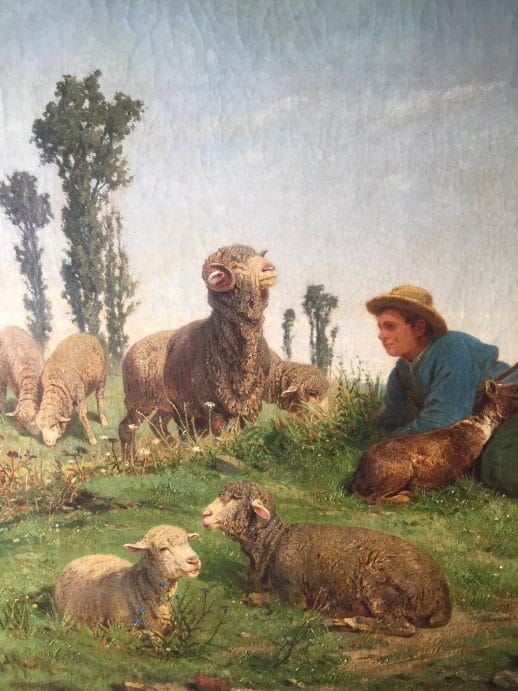
A work of art, be it a painting or sculpture, cannot fail to also keep in mind this mystical side, the authentic "animality" that distinguishes the masterpiece from a simple decorative interpretation. An animalier work must project us into a real dimension as if in that moment the depicted subject were before our eyes: vibrant and alive like the emotions we feel when looking at it in its natural context. I am of the opinion that preferring unusual and less obvious artistic currents to what today can be considered an artistic "investment" trend is fundamentally an unconventional choice, small galleries like mine have to explore new "territories" and focus on the search for that "niche" that the collector not subjugated by fashions appreciates and re-evaluates in many aspects, primarily for an alignment of taste and passion.
“We must rediscover the pleasure of returning to galleries, using online to enhance our knowledge, the pandemic has pushed the art world to face new challenges”
- NOWARC – Despite your young age, what do you think is the market situation in recent years, and in particular following Covid19?
VR – The current market is very complicated to analyze, the Covid19 situation has upset many traditional realities, has brought out others, the quality, rarity and eclecticism of high antiques have resisted, collectors today are increasingly knowledgeable and demanding, we need to update ourselves and like all professionals, antique dealers have also adapted by improving and dedicating themselves to the development of some aspects rather than others. With the galleries closed and the exhibitions postponed we had more time to manage our cultural resources, do research and give space to content, let me explain better, online has given a lot of space to those who tended to have an approach based on cultural in-depth analysis, the sales were resolved in ways other than face-to-face negotiations, the communication and visibility formulas have changed.

The fundamental change in my opinion is how much an operator is able to bring out the professionalism of his gallery, the specialization of the topics covered, the objectives and expertise in the field, in short everything that distinguishes a trained professional compared to other realities. We must rediscover the pleasure of returning to galleries, using online to enhance our knowledge. The pandemic has pushed the art world to face new challenges. As for the young Antiquarians, children of art, content management through social media or dedicated portals has created a dense network of connections and dissemination of knowledge which has allowed even non-experts to approach antiques in a more direct way, everything is much more usable and the distances between operators in the art system have shortened.
Compared to Contemporary Art, our reality was less exposed to the media, all of this served to rediscover a great beauty at a national level that had long lived in a veiled and generally reserved dimension.
“What makes The Bull so special is the fact that Potter painted something as ordinary as a bull on such a large scale, which had never been done before”
I have been a member of theAssociation of Young Milanese Antique Dealers, which refers to the Milanese Antique Dealers Association - FIMA and I can say that the spirit of collaboration that distinguishes our members has contributed greatly to the creation of new projects created to involve new groups of interlocutors and collectors. Within the Giovani Antiquari Milanesi there is a climate of positive, constructive and proactive discussion, we meet regularly on a monthly basis to discuss and approve new ideas always inherent to our field, a small success was the evening dedicated to Gala Amart, an event that also saw participants and partners the Youth of the Poldi Pezzoli Museum, Fai delegation from Milan – Youth Group, i Young people from the Bagatti Valsecchi Museum. We firmly believe in the union of multiple forces, creative minds and in a particular way we also carry out awareness-raising for the conservationist aspect, the valorization of art and the protection of artistic heritage.

- NOWARC – Take us to class: what are the fundamentals of animalier art?
This is one of the most famous paintings in the Mauritshuis Museum. What makes The Bull so special is the fact that Potter painted something as ordinary as a bull on such a large scale, which had never been done before. And despite this large size, he paid great attention to the smallest details, such as the lark in the sky, the sun on the meadow, the flies on the bull's back and the cow's whiskers. That is made the painting the epitome of Dutch nature painting.

When Paulus Potter died of tuberculosis before the age of thirty, he had already profoundly influenced the way animals are depicted in European art. Potter created portraits of animals, making them the centerpiece of his image, not just a backdrop for human action. The precocious son of a painter, his earliest dated work dates from 1640. He entered the Guild of St. Luke of Delft in 1646 and subsequently moved to The Hague. He is said to have wandered the Dutch countryside, sketchbook in hand, equally sensitive to how farm animals behave at different times of the day and to the vicissitudes of light from morning to sunset. Few of his contemporaries were more attuned to the moods of nature or the timeless harmony of animals, landscapes and weather. Potter's strong sensitivity to composition can be seen in the way he grouped shapes and used anatomical skills, the result of plein air studies and an immeasurable love for this world.
“If we observe the personalities of the artists who have contributed most to the growth of the animalier genre we find in all of them a particularly strong character, extreme sensitivity and an acute spirit of observation, they are lovers and profound connoisseurs of wild nature, all seasoned with a hint of rebellion and aversion to academic restrictions"
Recently the art world has developed a fair amount of biographical research as a function of bibliographic expansion, many artists obtain the right recognition given the quality of their works, but it is impossible to mention them all, I would say to mention the most famous divided into significant geographical areas. More than an objective and didactic transcription of life, I would like to present them through quotes formulated by them, or life anecdotes, to make people understand how much dedication, passion, technique, commitment and determination are hidden behind the scenes of the Animalier genre.

Starting from Great Britain where it is good to first of all make a fundamental distinction: the English are divided into two categories, those who love horses and the others. Life without animals would be unthinkable.
The clients appreciated the discovery of one of their favorites on canvas, they were amazed and equally proud to see him engaged in a wild gallop race, as he was enhanced on the wall of the sumptuous homes of the owners. No art critic, even the most skeptical, could ignore a new artistic genre anymore which involved an ever-increasing number of the public, including collectors and simple enthusiasts. Many other artists soon tried their hand at this genre, enjoying considerable success not only in England but also in the United States.
“Eugène Delacroix was fascinated by the bond that unites horse and rider... one perceives an almost mythological sense of fusion, identifying oneself in the figure of the centaur, so much so that human movements are in symbiosis with those of horses”
Théophile Gautier in Paris in 1880 wrote: "it seems that these artists could have created an atelier directly in the pastures, they manage to enter so deeply into animal instinct".
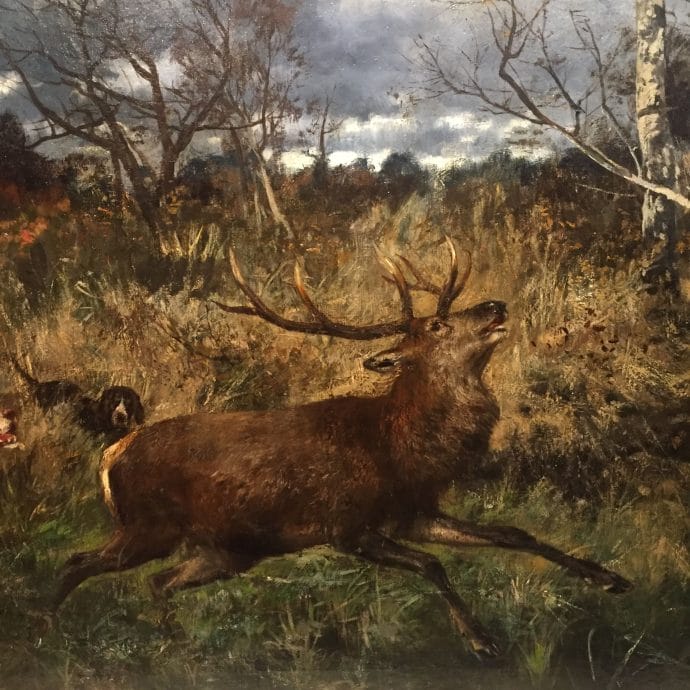
To name a few: Theodore Gericault (1791 – 1824) his passion as a knight emerges in all his admiration for the equestrian world, many works have as their subject the horse, celebrated in its most intimate aspects and reveal a total empathy towards the animal, his interest was not focused on the anatomy but on the physical conflict between the horse and man in all his impetuous fragility. His brilliant career was drastically interrupted due to an equestrian accident, but the works pass on to us all the charm and love for this noble animal (Horse scared by lightning 1813 / 14 - The Berber rope in Rome 1817).
Thanks to the collaboration with museums and art historians abroad, I bring to light an exclusive reality, which has a lot to tell and finds interest in the new generations of collectors, who choose a lifestyle in harmony with Nature.
